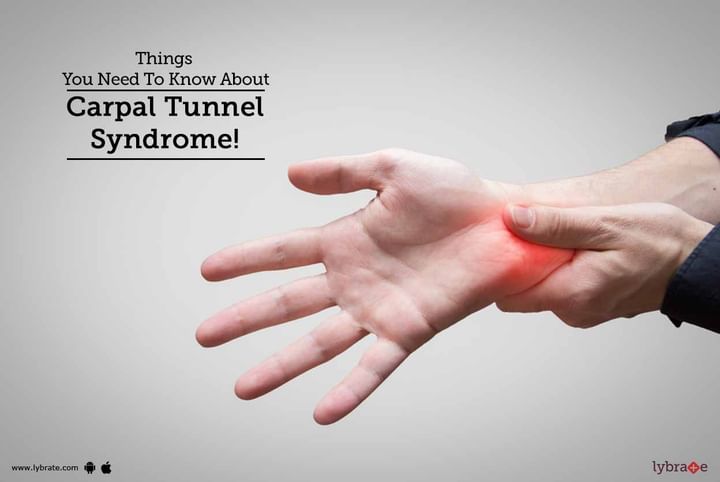Things You Need To Know About Carpal Tunnel Syndrome!
When the median nerve that runs through the palm and forearm is twisted or squeezed, a condition called the Carpal tunnel syndrome (CTS) occurs. This carpal tunnel is a passage that is narrow and is present in the ligaments and tendons. This nerve is responsible for offering a feeling sensation to the palm, index finger, thumb, and the middle finger. A part of the ring finger too shares the same. The median nerve is compressed when the tendons are irritated. This leads to pain in the forearm and arm, palm, and wrist. Additionally, this condition can cause numbness and weakness.
How it begins?
This condition does not occur suddenly but gradually. In the initial stage, the sufferer experiences burning, itching, and numbness in the palm. The thumb, index and the middle finger feel these symptoms. The affected individuals may notice that the hands are swollen and rendered useless. You may feel pain and numbness in one or both the hands during sleep. Slowly, the numbness and pain keeps increasing and can be felt during the day. This is why you may want to shake off hands multiple times.
Factors responsible for this condition:
Various factors can trigger Carpal tunnel syndrome. If you have had any injury to the wrist in the past that caused swelling, you may suffer from this syndrome. For instance, a sprain or fracture can trigger a Carpal tunnel syndrome. A thyroid gland that is overactive or underactive, arthritis, and overactive pituitary gland, too, can cause this condition. If your occupation involves an excessive movement of the wrists or if your lifestyle involves excessive work stress and the use of vibrating tools, then also this syndrome may affect you. Compression of the median nerve or narrowing of the space for the median nerve are the two other reasons. Fluid retention during menopause or pregnancy can also result in Carpal tunnel syndrome.
Will you be at risk?
Women are more likely to suffer from this condition as compared to men because the carpal tunnel is smaller in the former group. The symptoms are first seen in the dominant hand. The high-risk group includes diabetics and people who suffer from other metabolic disorders. People who are working with industries that deal with manufacturing, cleaning, assembly, sewing, or poultry or fish packing mostly face this disorder.
What can you do?
Surgical and non-surgical treatment methods are available for Carpal tunnel syndrome. When you are diagnosed with Carpal tunnel syndrome, undergo the treatment as advised by the doctor. Wear a splint at nights. During days, when you see swelling or redness of the palm, apply cooling packs. Take breaks from work, if it involves pressurizing the median nerve or if there is any narrowing of the space. Chiropractic therapies, acupuncture, and yoga are known to offer relief as well.
Prevention techniques:
To prevent Carpal tunnel syndrome, always ensure you stay in the right posture. Use a fingerless glove as this keeps the wrist and palm warm. Take frequent breaks from the task that you are performing, especially the ones that require too much of the wrist movement. Job demands should be considered, however, rotating tasks with colleagues can provide an excellent relief. If your doctor feels that surgery is the only option left to provide relief, then you need to go for the same. With the two options of open release surgery or endoscopic surgery, you can expect symptoms to be relieved as soon as the procedure is conducted.



+1.svg)
